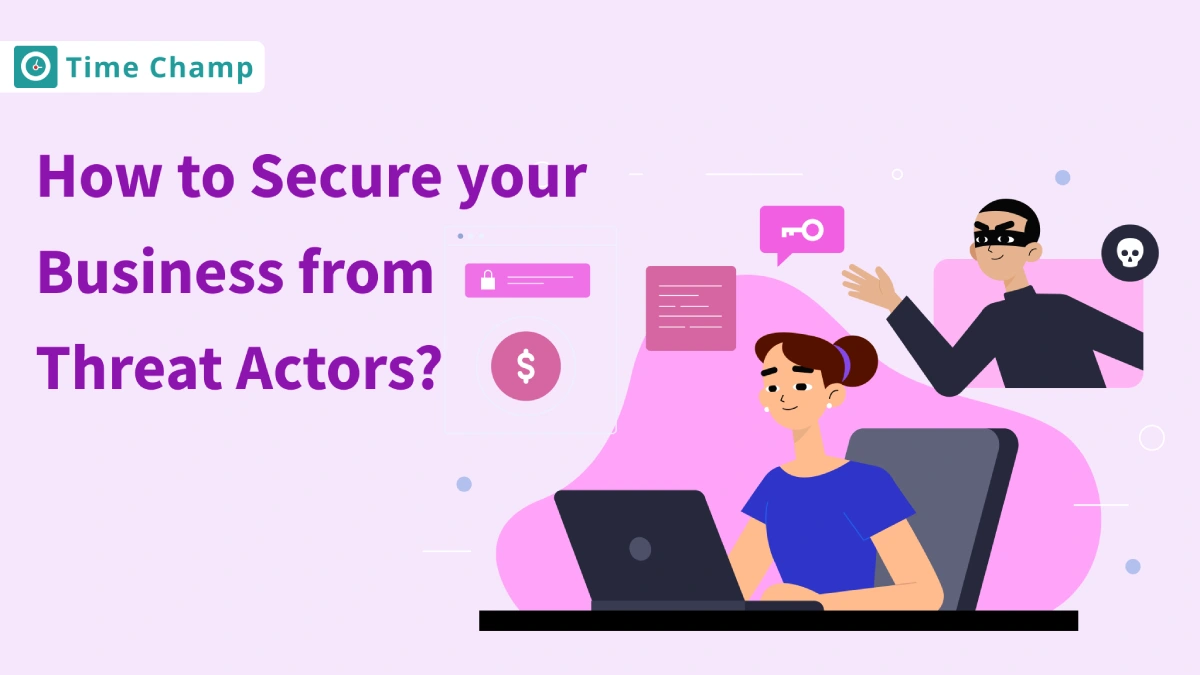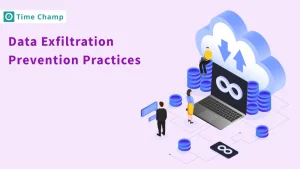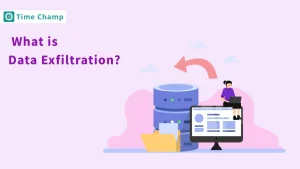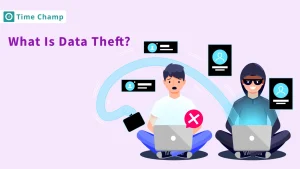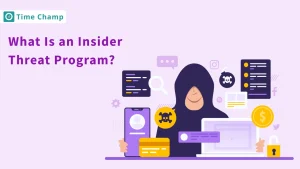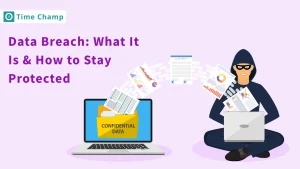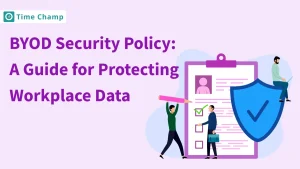Do you know how important it is to protect your business from cybercriminals, also known as threat actors? They can steal your company’s sensitive data, damage your systems, and claim financial losses. The effects can be severe destroying your company’s reputation, causing customers to lose trust, and draining your resources. However, there are simple and effective ways to protect your business from this threat actor.
In this guide, you will explore what is a threat actor, threat actor types, examples, and effective strategies you need to implement to protect your business. Let’s dive in!
What is a Threat Actor?
In cybersecurity, a “threat actor” refers to any individual or group that intentionally tries to cause harm to your organization’s online resources. If your company is targeted by the threat actors, they may steal your company’s sensitive data, and interrupt your operations. And they also use your weaknesses to gain financially, influence you politically, or for some other purposes. Threat actors may be skilled hackers, organized crime groups, and state-sponsored entities.
Understanding threat actors is essential for you to recognize who may target your business and help you better protect it. If you identify potential threat actors in your organization such as cybercriminals, hacktivists, or insider threats, you can strengthen your defenses. Then, it helps to save your company by making it harder for threat actors to access your company’s data or damage your network.
Types of Threat Actors
If you are well aware of the different types of threat actors it helps you prepare and respond more effectively to potential security risks. Here’s a look at the most common types you may encounter:

1. Cybercriminals
Cybercriminals are motivated by money and use different tricks to get into your systems. They often use phishing attacks or scams to steal your organization’s important information. Threat actors also use harmful software called malware, and ransomware which locks your files. Some cybercriminals work alone, while others work with larger crime groups. Sometimes they also like to sell stolen data online. You can protect your company and avoid costly attacks by recognizing these warning signs early.
2. Hacktivists
Hacktivists are one type of threat actor who use their hacking abilities to do their part for social or political change. They try to damage your organization’s reputation if they believe that your organization is harmful or unfair. Hacktivists use DDOS attacks to crash your websites, change website content, or leak private information.
They will target your organization mostly if your company is related to finance, technology, or government industries. If your company is at risk, assessing based on its public actions, partnerships, or other factors is important.
3. Insider Threat Actors
Insider threat actors come from your current employees, contractors, or even past employees who still have access to your system. These actors try to harm your company either on purpose, to benefit themselves, or by making simple mistakes. You need to be aware of insider threat indicators and monitor the employees regularly who are handling important systems and information to protect your company from insider threats. You can only allow the people with whom you have more trust to maintain sensitive areas in your company.
4. Nation-State Actors
Nation-state actors are supported by the government. They are some of the dangerous threat actors to your organization. Mostly, they will attack the healthcare, technology, and finance-related industries. They have a lot of funding to use the latest methods. They use these resources to find hidden bugs in software that you don’t know about, trick you into sharing information, and make complicated viruses.
To protect against this, it’s a good idea to use strong cybersecurity tools and keep up with any threats that could impact your industry. For example, even a Trojan virus on Mac can serve as an entry point for more advanced attacks if not detected early.
5. Thrill Seekers
Thrill seekers hack your company’s important information for fun or personal challenges, not for money or to prove a point. This type of hacker treats hacking like a game or testing their skills against different security defenses. Even though they don’t usually mean to cause harm, their actions can still disrupt your services or expose your systems to bigger threats.
To secure your valuable information from this type of attack, you need to set strong passwords and two-step verifications to login into your systems. These steps make it harder for thrill seekers to break into your systems.
6. Script Kiddies
Script kiddies are beginner hackers, they use ready-made scripts or tools without fully knowing how they work. Mostly, they can attack weak or unprotected systems, because they don’t have the skills that advanced hackers have. They often hack just for fun or to create problems, simply because they can do it. You can always update your systems and software to protect against these simple attacks. Then, script kiddies find it hard to gain access to your systems.
Who are the Targets of Threat Actors?
Threat actors mostly target businesses, government agencies, banks, schools, and well-known people. These hackers usually target industries where they can steal valuable information, like customer details or financial records. They might do this to demand money or just to cause trouble. Your company may also be targeted by this type of scammer to steal customer’s details, financial records, and trade secrets.
When dealing with money and sensitive client information, your organization can become a big target for hackers. Many of the medical and technological institutions work on advanced projects, those fields also can be targeted by hackers to steal that researched data. Attackers also target government agencies and public services for threatening national security and public safety.
Threat Actor Tactics
It’s important to understand threat actor tactics to protect your business from cyber threats. These are the methods hackers use to break into your systems and steal data.
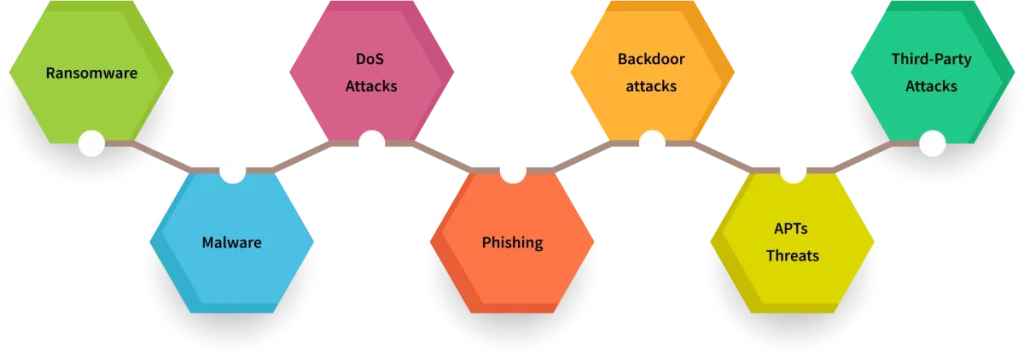
1. Ransomware
When hackers lock your company’s data or systems and demand money to unlock them, you are the victim of a ransomware attack. These attacks can ruin your business, cost you money, and damage your reputation. Protect your business by having good backup systems and train your team to know how to spot suspicious emails and links.
2. Malware
Malware is a harmful software created to damage your systems. It can steal your data, and mess with files; it can even take remote control over devices. There are a few types of malware commonly found: viruses, trojans, and worms. Keeping your software updated and using strong antivirus programs will help you protect yourself.
3. Denial of service attacks
A Denial of Service (DoS) attack is where hackers flood your network with so much traffic that your systems crash and become unavailable to users. That can cause a lot of downtime and trouble for your business. Avoiding DoS attacks means your network can handle sudden traffic changes and use tools like a firewall and a load balancer to manage the network traffic.
4. Phishing
In phishing, attackers pretend to be trusted companies to gain your trust and collect the company’s sensitive information from you. That information may be passwords, credit card details, or some other. These attacks usually come through emails, messages, or phone calls. Teach your team how to spot phishing attempts, and use multi-factor authentication for extra security to protect your business.
5. Backdoor attacks
A backdoor attack happens when hackers secretly create hidden entry points into your system. They use these backdoors to sneak past your security and take control of your network. You need to scan for weak security systems regularly and use encryption to help spot and block these attacks to protect your business.
6. Advanced persistent threats
Advanced Persistent Threats (APTs) are serious and long-term cyberattacks where hackers get into your system and stay hidden for months or even years. Most of these attacks are done by well-organized groups with lots of resources. You should always protect your business, keep your security up to date, and check your systems for any unusual activity.
7. Social Engineering
Hackers use social engineering when they trick people into giving away private information. Often, they use mind tricks and manipulate you into believing that whom you are now trusting is also someone you trusted before. Learn how to protect your business by teaching your team to spot these tricks and always double-check requests for sensitive information.
8. Third-Party Attacks
Third-party attacks are when scammers go after vendors, contractors, or other partners that have access to your systems. They use any weakness in your relationship with these third parties. To reduce this risk, make sure your vendors follow good security rules, check for security regularly, and that everyone is doing the right thing in terms of security.
How Do Threat Actors Impact Your Business?
Hackers, cybercriminals, and other malicious individuals can have a major impact on your business. When these hackers attack your systems, they can knock your operations out of commission, damage your brand, and cost you a fortune. To protect your organization, you need to understand how these threats affect your business.
Stealing sensitive information is one of the biggest ways threat actors impact your business. It could be customer data, financial records, and intellectual property. Hackers have access to this type of data and can do everything from fraud, to blackmail, to sell it on the dark web. Such a breach can ruin your reputation in the form of customer distrust as well as legal issues.
The other big impact is downtime. If your business suffers a cyberattack such as ransomware or denial of service attack, your systems could be offline for hours, days, or even weeks. This means that during this time your employees can’t do their jobs, and your customers can’t access your services or products. Lost revenue and long-term damage to customer loyalty.
Data breaches and attacks can be costly, particularly if a business fails to comply with data protection laws. It is most important to be proactive in applying strong cybersecurity practices so that you can protect your company.
Strategies to Stay Ahead of Threat Actors
Cyber-attacks are becoming more complex and you will need the right strategies in place to protect your company. Below you will find a list of strategies for shielding your business from malicious attacks.

1. Network Monitoring
Another key strategy to protect your business is constant network monitoring. You can actively watch your network, and see unusual activity such as unauthorized access attempts or a sudden increase in data traffic. Time Champ takes this approach a step further by adding advanced data loss protection features to give you more control over network security.
Time Champ allows you to control access to websites, block unauthorized devices, real-time monitoring of files, and supervise data uploads and downloads. These tools protect your sensitive information and keep your network safe.
2. Multi-Factor Authentication
Multi-factor authentication (MFA) is one of the simplest yet most powerful defenses you can set up. MFA gives an extra layer of security to your accounts by asking for two or more verification methods while accessing services. It could be something they know such as a password and something they have such as a mobile phone or security token.
If MFA is in place, even if a hacker steals your password, they won’t be able to access your systems without the second verification step.
3. Security Awareness Training
Employees are often the first line of defense against attacks, so it’s great to train them on spotting potential threats. Security awareness training can regularly teach your team how to spot phishing emails, and what to do when they see suspicious links. If your staff knows the risks and knows what to do, they can assist in protecting your business from social engineering attacks and other common threat tactics.
4. Endpoint Security Solutions
Protecting your business means securing all the devices connected to your company’s network. If not secured, devices such as laptops, smartphones, and even desktops will become easy entry points for hackers. Endpoint security solutions protect these devices from malware and ransomware types of threats.
Antivirus software, encryption, and device management tool solutions are common solutions to keep everything secure. Your devices need regular updates and patches including the most recent vulnerabilities.
Final Thoughts
It’s important to know who a threat actor is and how they can affect your business. Recognizing what types of threat actors and what kind of tactics they are using allows you to become more prepared in your defense strategies. The threats to your business are constant and require you to take strong security measures to protect your business. Stay informed and proactive. Protect your future today.
Protect your business from data threats!
Sign up for Time Champ’s advanced DLP and monitoring tools today.
Signup for FreeBook DemoFrequently Asked Questions
There are many ways that threat actors gain access to systems. These methods involve exploiting vulnerabilities in software, tricking employees into giving up their sensitive information with phishing or using malicious software called malware. It never hurts to secure your network, and they might also take advantage of weak passwords or poorly secured devices to break into networks.
Yes, threat actors often target small businesses, because they may not have as many security measures. Hackers seek out businesses with poor or outdated security to make easy access to sensitive data, such as customer information or financial records. Basic security practices should be implemented by small businesses.
An insider threat actor is someone within your organization who is intentionally or unintentionally causing harm to your company, whether it is an employee or contractor misusing access to company data. However, an outsider threat actor is an individual or group of people who are outside the organization and are attempting to break into your systems from the outside.
Yes, usually employees are the main targets for threat actors. Phishing emails, and other types of attacks targeting employees, are used by the attackers to make them click on links leading to malicious URLs or to download malicious files. Employees need to be trained to know these threats and why it’s important to have strong passwords.
If you think your business is being attacked by a threat actor, the first thing to do is to check your systems for any sign of intrusion, like strange emails or unusual network activity. If you see any odd activity, your IT team or security team ought to be notified, and you should take steps to strengthen your security measures and, if possible, do a security audit.

